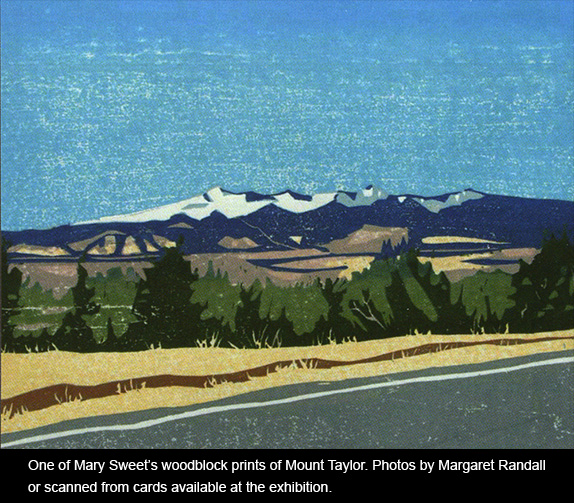
New Mexico artist Mary Sweet has a wonderful collection of 30 color woodblock prints of Mount Taylor on exhibition at the New Mexico State Land Office (310 Old Santa Fe Trail, Santa Fe). It opened on September 5th and will be up through the end of the month (8 a.m. – 12 and 1 – 5 p.m. weekdays).
First, something about the State Land Office itself. Pressing the call button at the institution’s parking lot, and saying you want to visit the exhibition, allows you to enter and park free. You immediately have a sense that this is a government department that works. Walking toward the main door, you pass a series of small herb gardens sponsored by the staff in conjunction with Tesuque Pueblo. Entering, you are greeted by enthusiastic and friendly workers. Several of them told us how satisfying it is to work under Land Commissioner Ray Powell.
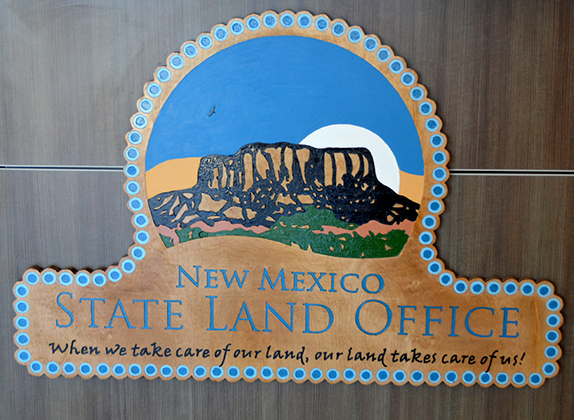

Art exhibitions only began recently at these offices, and already the schedule is full through April of 2015. The next show honoring veterans, will include work by Native artists. The art is well displayed on large panels just beyond the entrance.
Sweet’s work is strong and unique. This particular exhibit pays tribute to the great Japanese woodblock artist Hokusai’s 36 Views of Mt. Fuji. As Sweet says, “Mt. Fuji and Mt. Taylor are each sacred mountains in their own part of the world. In this series, which ended up being more than 30 views, Mt. Taylor is seen from many angles, in many seasons and weather conditions, and calls on us to pay attention to and respect the land we live on.”
Sweet began this series in 1999. She describes driving into Albuquerque often from Tijeras where she lives, and seeing Mt. Taylor in the distance, “sometimes small and far away and sometimes a clear translucent blue that looked quite near.”
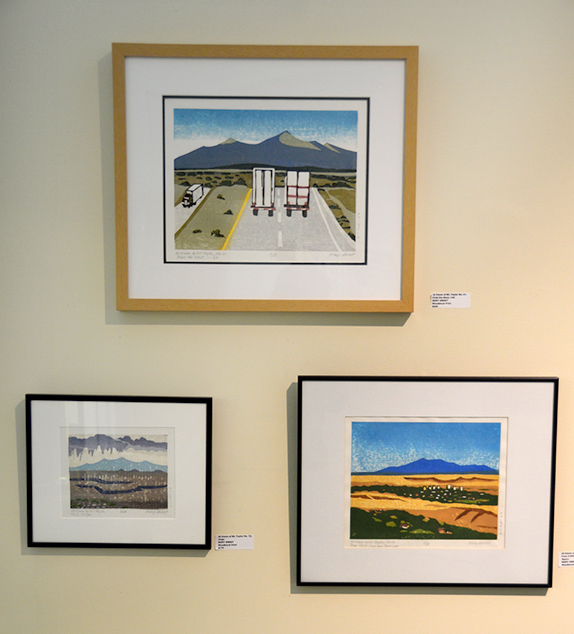
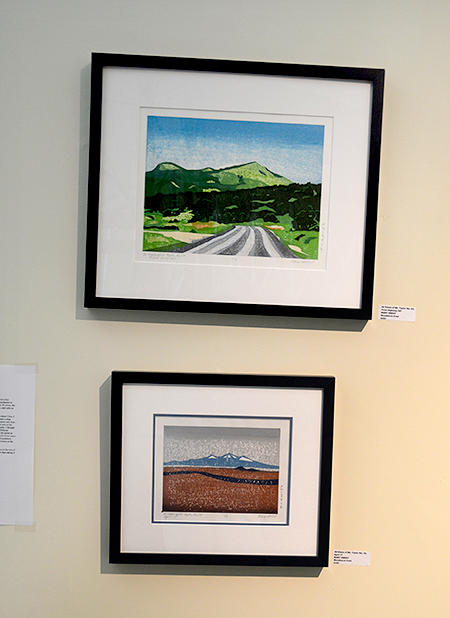
In a modest handout accompanying the show, Sweet shares her artistic process:
I have been a painter all my life but have only been doing woodblock prints, Japanese style, since 1993 (…) Most of my woodblocks are done by reduction block rather than making a separate block for each color. Being a painter, I have trouble thinking like a printmaker as to how to separate out all the colors. I’d rather start with one block, carve out the white areas so they won’t print and then print the lightest color first. Then I carve out what is to remain that color on the paper and print the next lightest color and so forth until only the darkest areas to be printed are left on the block at the end. Or I can start with the sky and work top to bottom being careful to print darker areas over lighter ones, not vice-versa. This method is easier to register since I am printing the same block over and over. It also allows some improvising as I go and allows many layers of color without having to carve a huge number of blocks. But I can only do small editions this way.
Sweet uses dampened Japanese paper and kento registration marks, as well as watercolors and ink. She prints by hand with a baren.
The artist’s fascination with Mt. Taylor has extended to hiking the Gooseberry Trail to the top on several occasions, driving the jeep road to La Mosca Towers (which she say are ugly), and viewing the mountain from the air. She says: “Mt. Taylor is sacred to many Native American people but it has been less so to the rest of us, which is sad. As I learned to take it seriously and actually see it rather than taking it for granted I hope others might too.”
These beautiful woodblock prints offer a complex understanding of the mountain as well as visions that are satisfying both technically and artistically.
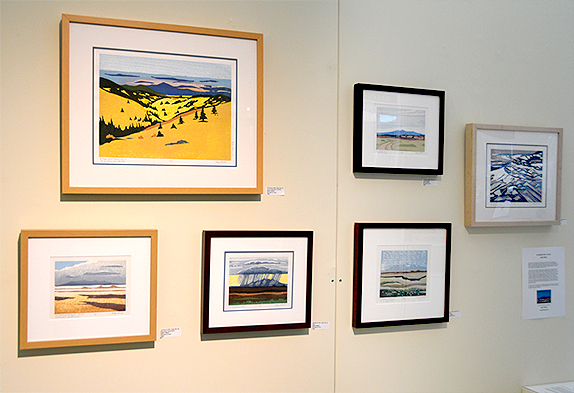

September 26, 2014